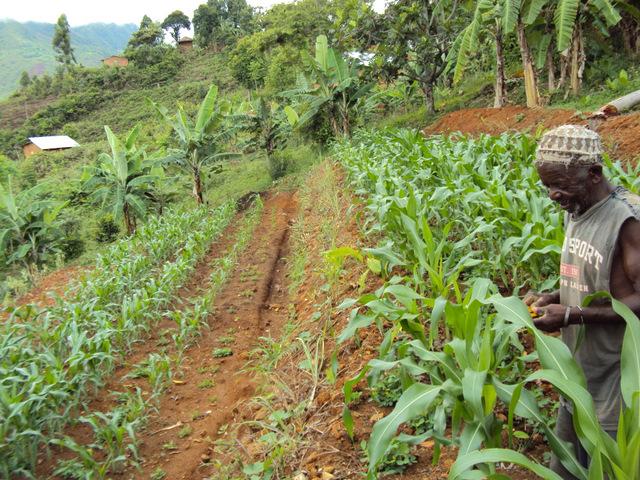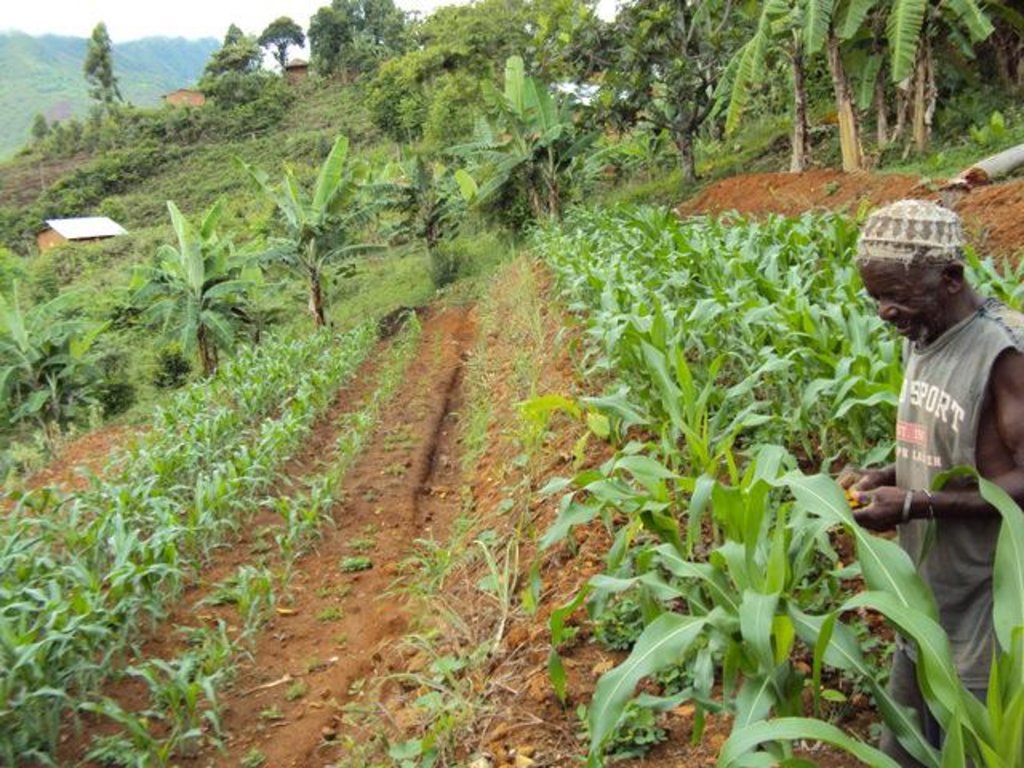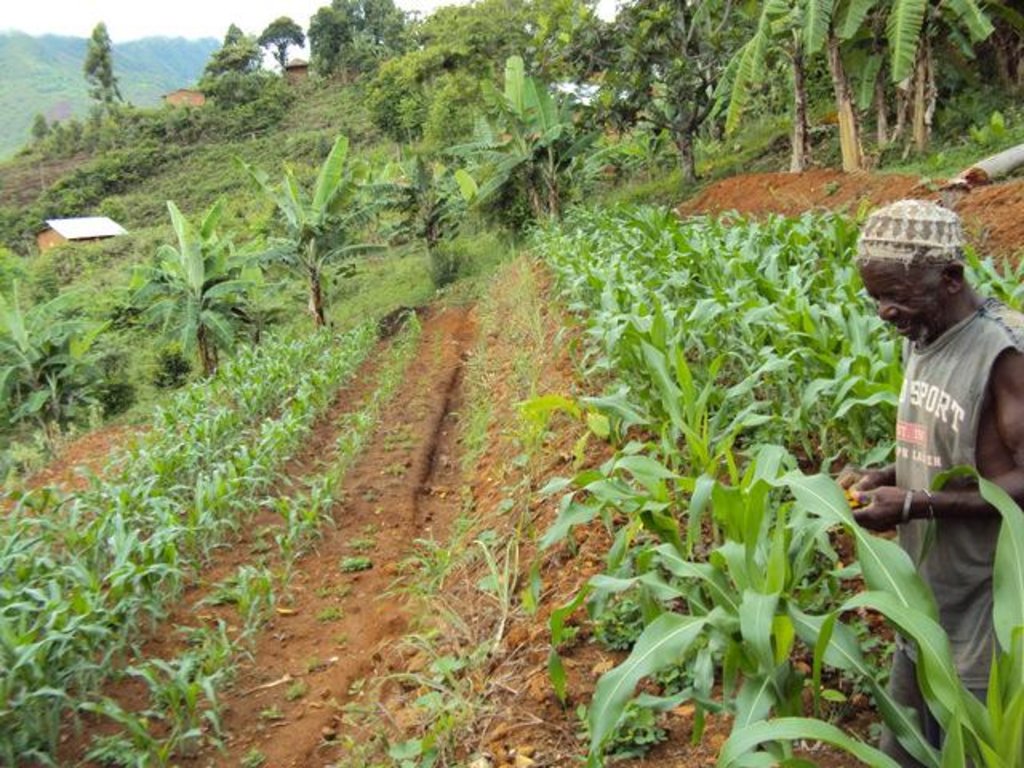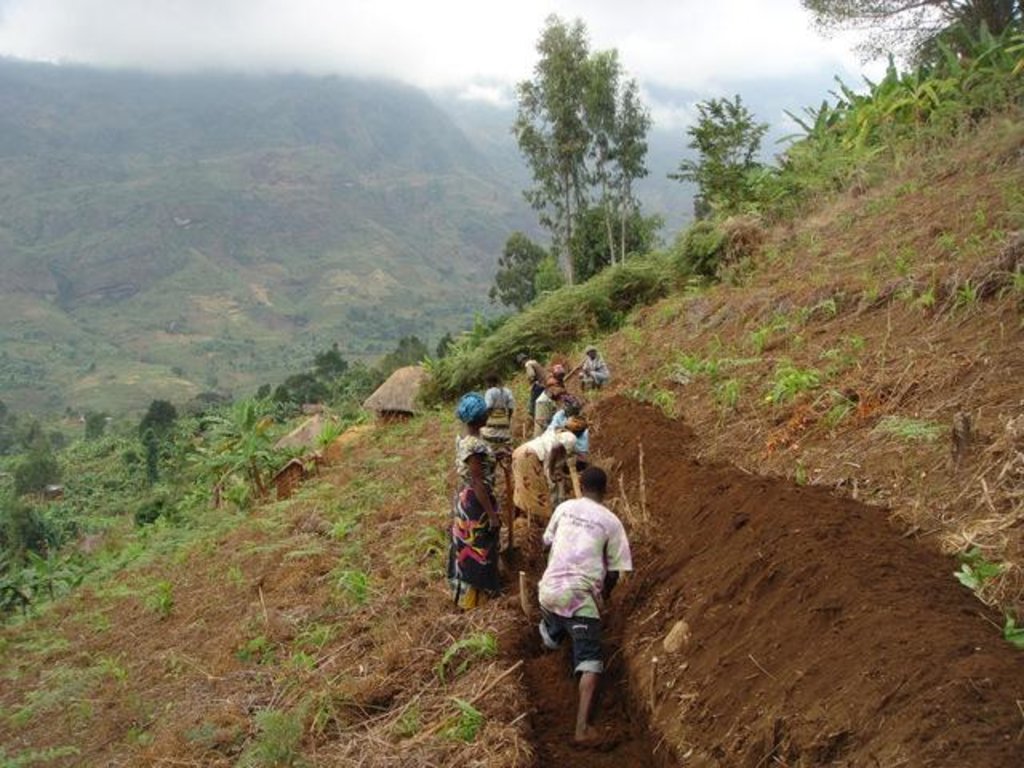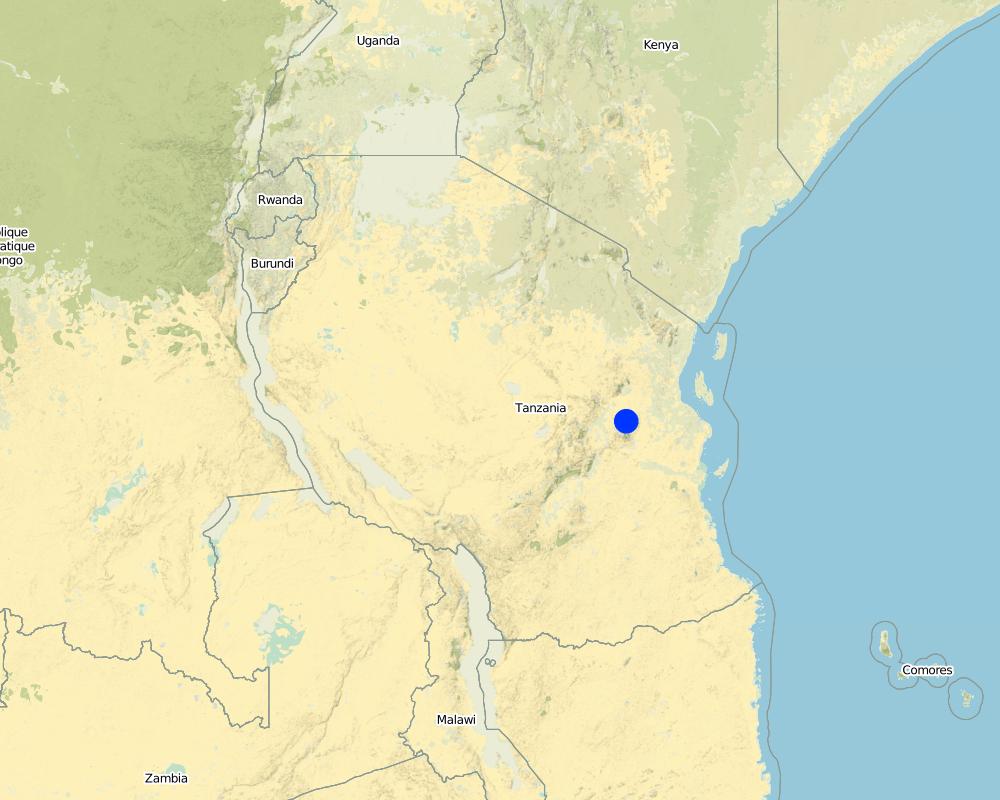Equitable Payments for Watershed Services [Танзания]
- Создание:
- Обновить:
- Составитель: Philippe Zahner
- Редактор: –
- Рецензент: Fabian Ottiger
approaches_2567 - Танзания
Просмотреть разделы
Развернуть все Свернуть все1. Общая информация
1.2 Контактные данные специалистов и организаций, участвующих в описании и оценке Подхода
Специалист по УЗП:
Dosteus Lopa
dosteus.lopa@co.care.org
CARE International in Tanzania
Morogoro
Танзания
Название организации (-ий), содействовавших документированию/оценке Подхода (если применимо)
Swiss Agency for Development and Cooperation (DEZA / COSUDE / DDC / SDC) - ШвейцарияНазвание организации (-ий), содействовавших документированию/оценке Подхода (если применимо)
CARE International (CARE) - Соединенные Штаты Америки1.3 Условия, регламентирующие использование собранных ВОКАТ данных
Составитель и ответственный/-ые специалист(-ы) согласны с условиями, регламентирующими использование собранных ВОКАТ данных:
Да
2. Описание Подхода УЗП
2.1 Краткое описание Подхода
Equitable Payments for Watershed Services (EPWS) is a programme using Payments for Ecosystem Services (PES) to improve rural livelihoods.
2.2 Подробное описание Подхода
Подробное описание Подхода:
Aims / objectives: Incentive mechanisms are used to reward upstream landowners for maintaining a beneficial land use or for adapting a particular land use practice which affects the availability and/or quality of downstream water resources. The EPWS approach has enormous potential to advance a new conservation revolution based on a compensation mechanism encouraging and financing conservation efforts as well as improving the livelihoods of the rural poor. EPWS aims to spread SLM technologies to communities, to raise awareness of the benefits of SLM and to improve land productivity. Farmer groups are formed to lead the implementation of SLM.
Methods: The approach includes supervision, support and training of farmers to ensure appropriate implementation of SLM and efficient soil erosion control. Methods include demonstration plots and farmer-to-farmer extension. Capacity building to farmers (on gender mainstreaming, good governance and relevant laws and policies) and monitoring of hydrological and livelihood status are important components of the approach. Efforts to ensure good women integration resulted in a relatively high proportion within the farmer groups (>35%). A payment mechanism has been established to compensate farmers for delivering watershed services (in form of freshwater) through implementation of SLM. Compensation payments – paid in cash and through material support – are made first to establish land use changes, and thereafter for service delivery and maintenance. They are mainly covered through international donors (DANIDA) and ‘buyers’ from the private sector, investing in watershed management.
Role of stakeholders: The EPWS team consisting of CARE International, WWF staffs and short-term workers (such as students) is always involving government staff in various activities to induce them to knowledge on EPWS in particular and the PES concept at large.
Other important information: This PES approach is very new in the country and there is little expertise within the government -which therefore needs to take deliberate efforts to groom experts through seminars and courses on PES mechanisms and its operationalisation
2.3 Фотографии, иллюстрирующие Подход
2.5 Страна/ регион/ место, где применялся Подход
Страна:
Танзания
Более точная привязка места:
Morogoro
Map
×2.7 Тип Подхода
- в рамках проекта/ программы
2.8 Каковы цели/ задачи Подхода
The Approach focused mainly on SLM with other activities (Improvement of livelihoods, improvement of hydrological system)
Improve livelihoods through SLM / Improvement of hydrological system / Mechanism to ensure effectiveness, growth and sustainability of EPWS / Enhance quality of program implementation
The SLM Approach addressed the following problems: Land cover changes due to extensive cultivations / Deforestation and forest degradation / Soil erosion, loss of soil fertility / Low storage capacity of the Uluguru Mountains due to land cover change / Declining amount of available water in the river coming from Uluguru Mts / Increased run-off and sediment load in water system due to bare lands
3. Участие и распределение ролей заинтересованных сторон
3.1 Заинтересованные стороны, участвующие в реализации Подхода и их роли
- местные землепользователи/ местные сообщества
Efforts to ensure good women integration resulted in a relatively high proportion within the farmer groups (>35%).
- эксперты по УЗП/ сельскому хозяйству
experts on hydrology, GIS, SWC, economics, forests, etc.
- общественные организации
DAWASCO
- частный сектор
Coca Cola KLtd
- местные власти
Morogoro district council
district commissioners, ward councillors
- международные организации
DANIDA, CARE International Tanzania, WWF Tanzania
3.2 Участие местных землепользователей/ местных сообществ на разных стадиях реализации Подхода
| Участие местных землепользователей/ местных сообществ | Перечислите участников и опишите их вовлеченность | |
|---|---|---|
| инициирование/ мотивация | нет | |
| планирование | интерактивное | |
| выполнение | внешняя поддержка | Farmers are being compensated (paid in cash) for labour and area provided for the implementation of SLM (opportunity costs). Material support through manure, seeds and working tools is given as well. |
| мониторинг/ оценка | нет | |
| Research | нет |
3.4 Принятие решений по выбору Технологии/ Технологий УЗП
Укажите, кто принимал решение по выбору применяемой Технологии/ Технологий:
- преимущественно специалисты по УЗП после консультаций с землепользователями
Поясните:
Interactive implementation and decision making; participatory feasibility studies to identify the core problems; PRA to identify and agree on SLM technologies; government staff was involved in various activities e.g. planning, training, data collection and analysis, extension, etc.
Decisions on the method of implementing the SLM Technology were made by mainly by land users supported by SLM specialists
4. Техническая поддержка, повышение компетенций и управление знаниями
4.1 Повышение компетенций/ обучение
Проводилось ли обучение землепользователей/ других заинтересованных лиц?
Да
Укажите, кто проходил обучение:
- землепользователи
Тип обучения:
- обмен опытом между фермерами
- опытные участки
Рассматриваемые темы:
practical skills on SLM measures, leadership skills, governance, gender mainstreaming, policies and laws to ensure their understanding on the implementation of the EPWS project in their locality
4.2 Консультационные услуги
Есть ли у землепользователей возможность получать консультации?
Да
Укажите, где именно оказываются консультационные услуги:
- на полях землепользователей
Описание/ комментарий:
Key elements: technical support on monitoring, provision of extension services for improved land use, situation analysis, awareness creation, capacity building on legal issues and mapping of interventions; People involved: University, foresters, hydrologists, Ministry of agriculture, land use planners
4.3 Институциональная (организационная) поддержка
В ходе реализации Подхода были ли организованы новые институциональные структуры или поддержаны уже существующие?
- нет
4.4 Мониторинг и оценка
Являются ли мониторинг и оценка частью Подхода?
Да
Комментарии:
bio-physical aspects were monitored through measurements
socio-cultural aspects were monitored through observations
economic / production aspects were monitored through observations
4.5 Научные исследования
Были ли научные исследования частью Подхода?
Да
Укажите темы исследований:
- социология
- экономика / маркетинг
- экология
Напишите подробнее и назовите тех, кто выполнял исследования:
Research is a main part of PES as an approach to facilitate SLM adoption and has been very effective in guiding programme design; it included SLM assessment, hydrological analysis, economic analysis, social and livelihoods assessment, etc. All interventions applied were proposed by research conducted before and during implementation.
Research was carried out on-farm
5. Финансирование и внешняя материальная поддержка
5.1 Годовой бюджет мероприятий по УЗП в рамках Подхода
Если точный годовой бюжет неизвестен, укажите примерный диапазон затрат:
- 100 000-1 000 000
Комментарий (например, основные источники финансирования/ ключевые доноры):
Approach costs were met by the following donors: international (DANIDA): 60.0%; private sector ('buyers' of ecosystem service): 9.0%; local community / land user(s) (through labour power): 31.0%
5.2 Финансирование и внешняя материальная поддержка, предоставляемая землепользователям
Предоставлялась ли землепользователям финансовая/ материальная поддержка для применения Технологии /Технологий?
Да
5.3 Субсидии на отдельные затраты (включая оплату труда)
- сельскохозяйственные
| Укажите, какие ресурсы были субсидированы | В какой степени | Опишите субсидии подробнее |
|---|---|---|
| семена | профинансированы частично | |
| удобрения | профинансированы частично | |
Если труд землепользователя был существенным вкладом, укажите, был ли этот вклад:
- за денежное вознаграждение
Комментарии:
Farmers are being compensated (paid in cash) for labour and area provided for the implementation of SLM (opportunity costs). Material support through manure, seeds and working tools is given as well.
5.4 Кредитование
Предоставлялись ли в рамках Подхода кредиты на мероприятия УЗП?
Нет
6. Анализ влияния и заключительные положения
6.1 Влияние Подхода
Сумел ли Подход помочь землепользователям внедрить и поддерживать технологии УЗП?
- Нет
- Да, немного
- Да, умеренно
- Да, существенно
increased production
Сумел ли Подход расширить возможности социально и экономически уязвимых групп?
- Нет
- Да, немного
- Да, умеренно
- Да, существенно
women have gained training in improving land use practices
Did other land users / projects adopt the Approach?
- Нет
- Да, немного
- Да, умеренно
- Да, существенно
Upscaling to neighbouring villages will be facilitated by the establishment of networks of farmers groups to receive training by local extension services. A steering committee, with representatives of the farmers, investors and government offices will facilitate replication in other parts of the country.
Did the Approach lead to improved livelihoods / human well-being?
- Нет
- Да, немного
- Да, умеренно
- Да, существенно
Did the Approach help to alleviate poverty?
- Нет
- Да, немного
- Да, умеренно
- Да, существенно
through change of crop production
6.2 Основные причины, побуждающие землепользователей внедрять УЗП
- материальное стимулирование/ субсидии
- причастность к движению/ проекту/ группе/ сети
- экологическая сознательность
- well-being and livelihoods improvement
6.3 Долгосрочная устойчивость мероприятий в рамках Подхода
Могут ли землепользователи самостоятельно (без внешней поддержки) продолжать применение того, что было реализовано в рамках Подхода?
- да
Если да, опишите как:
Participant land users can continue the activity without additional support- maintenance costs are low and the technologies will improve productivity and resilience of farming system. Upscaling to neighbouring villages will be facilitated by the establishment of networks of farmers groups to receive training by local extension services. A steering committee, with representatives of the farmers, investors and government offices will facilitate replication in other parts of the country.
6.4 Сильные стороны/ преимущества Подхода
| Сильные стороны/ преимущества/ возможности по мнению составителя или других ключевых специалистов |
|---|
| PES as an additional argument for supporting property claims |
| To ensure services are delivered and payments are made and a reliable monitoring mechanism has been put in place |
| Poor people are in the centre of the objectives |
| Approach rewards land users for providing watershed services |
| PES as an incentive for conservation, helping to change land users’ vision towards improved land management |
| Once measures are applied they are simple and cheap to maintain |
6.5 Слабые стороны/ недостатки Подхода и пути их преодоления
| Слабые стороны/ недостатки/ риски по мнению составителя или ответственных специалистов | Возможные пути их преодоления/снижения? |
|---|---|
| May reduce the effectiveness of non-incentive based approaches as people will now demand rewards/payments | awareness creation is important to all players including government and local communities |
| Payments / rewards are realised before service delivery | ensure integration of PES with other approaches to ensure effectives short and long term benefits. Paying labour cost upfront while waiting for the service delivery rewards |
7. Справочные материалы и ссылки
7.1 Методы сбора/источники информации
- выезды на места, полевые обследования
- опросы землепользователей
Ссылки и модули
Развернуть все Свернуть всеСсылки
Нет ссылок
Модули
Нет модулей


